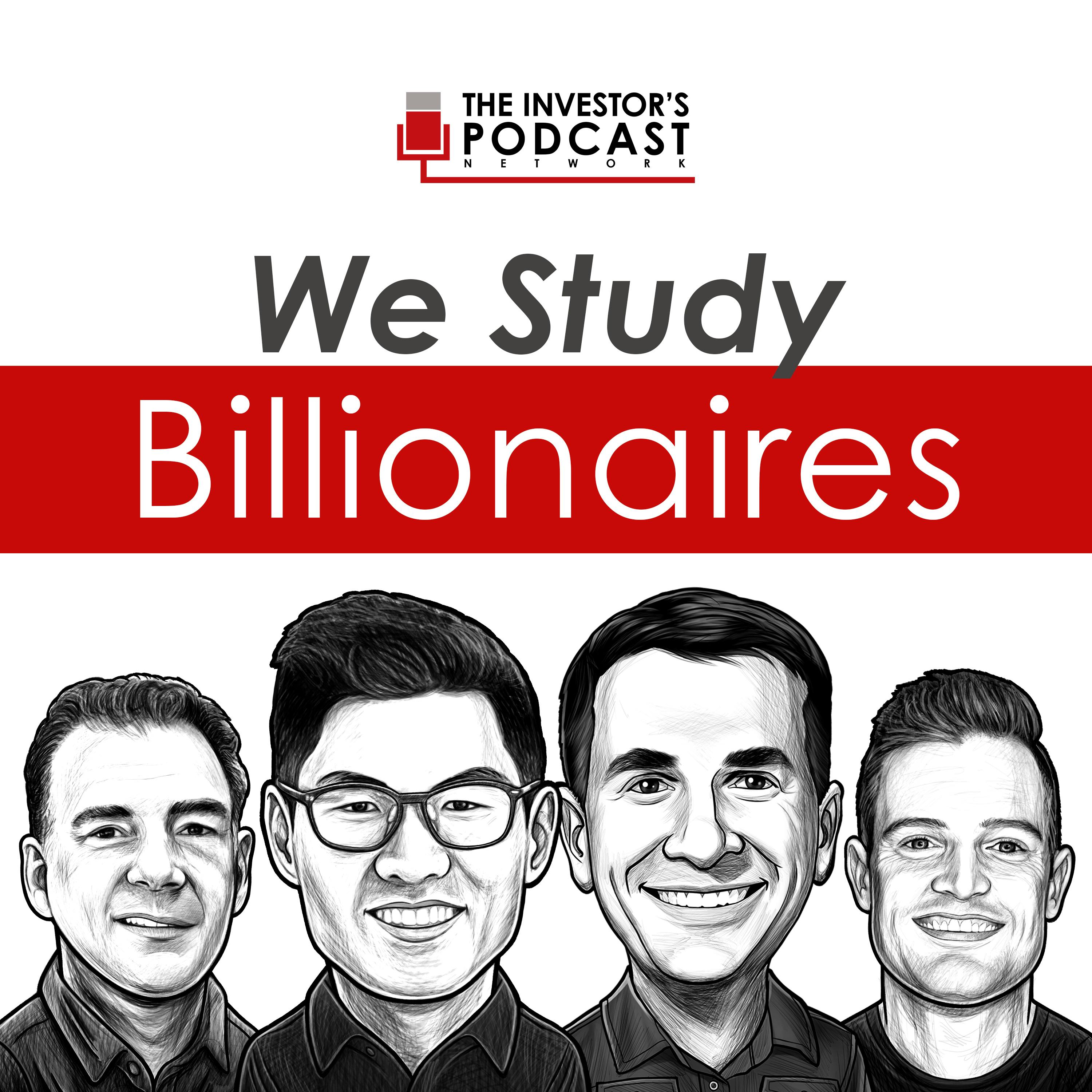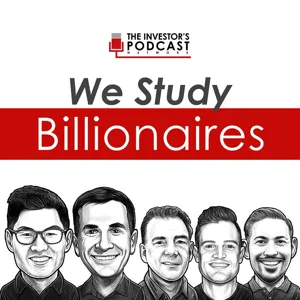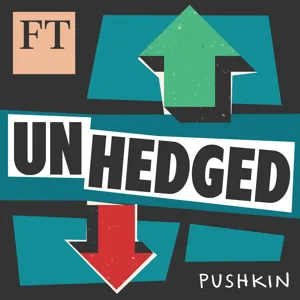Podcast Summary
Commercial Real Estate Struggles in 2022 Amidst Rising Rates and Capital Market Deterioration.: While the market faced challenges, opportunities exist where assets are mispriced. Despite market inefficiency, a rebound in demand is expected in H2. Keep a level head through the noise.
The commercial real estate industry faced a down year in 2022, similar to the S&P, and was hit back-end loaded with a decline of 12 out of 13 points starting in May. Rising real estate interest rates and capital market deterioration were the factors behind the decline. In spite of market inefficiency and conventional assets not presenting enough value to pursue, pockets of opportunity exist where assets are mispriced due to special circumstances. The present market state presents severe challenges to getting deals done, but an uptick in capital markets liquidity may lead to an uptick in demand in the second half of the year. Investors are advised to be good investors and keep their heads straight through all the noise.
Commercial Real Estate Transactions and the Impact of Interest Rates: Despite an overall increase in commercial real estate transactions in 2022, a significant drop in Q4 and the concern of rising interest rates may lead to lower transaction volume in 2023. Investors should closely monitor the rate of change in interest rates and its impact on the market.
Transaction volume in commercial real estate fell in 2022, with Q4 experiencing a 62% drop year over year, but overall the year was still up 21% relative to 2019. Dallas remained the number one market for transaction volume, but all top five markets were down in volume, except for Manhattan which was up 8% year over year. Rising interest rates and the rate of change of those interest rates, which is affecting the commercial real estate market, is a major concern. The Fed raised the benchmark rate eight times and the market had to constantly adjust to the changes. Banks freezing up and a high rate of change in interest rates could lead to lower transaction volume in 2023 than in 2022.
The Impact of High Interest Rates on Commercial Real Estate Market: High interest rates have caused downward pressure on pricing in the commercial real estate market. The consequence of floating rate debt issued in 2020 and 2021 is now resetting to substantially higher interest rates. Interest rate caps can provide insurance, but keeping the context in mind is crucial while negotiating and closing deals.
High interest rates have caused downward pressure on pricing in the commercial real estate market and led to price reductions in asset sales. The consequence of floating rate debt issued in 2020 and 2021 is now resetting to substantially higher interest rates. This debt was wanted because it allowed flexibility in creating value and selling the asset, but now it is being reset at much higher rates. Interest rate caps can provide insurance, but they typically have durations of two to three years before resetting to market value. Keeping these effects in mind, it is important to acknowledge the context from which these prices and deals are being negotiated and closed, based on where the market was coming from in 2018 and the excess appreciation that occurred in 2021.
The impact of variable rate debt on commercial real estate assets: Interest rates are not the only factor affecting cap rates in commercial real estate. Understanding the dynamics of supply and demand is crucial for making informed investment decisions.
Variable rate debt is causing cash flow issues for commercial real estate assets as interest rates rise. However, while interest rates do contribute to maintaining a spread, it's mainly supply and demand that determines cap rates, causing them to expand or compress over time. In a returns-driven industry like commercial real estate, changes in demand and expectations of rent growth can also affect cap rates. In 2022, a series of downward steps in demand coinciding with rising interest rates led to more cap rate expansion in multi-family, despite its access to cheaper debt from agencies like Fannie and Freddy. Therefore, understanding the nuances of supply and demand in the industry is crucial to make informed investment decisions.
Industrial Real Estate: A Viable Investment Option in Today's Market: Commercial real estate investors should consider industrial real estate as a viable investment option as it offers higher yields on cost compared to recent years. With the fringe-shoring trend, investing in tighter markets with good fundamentals can lead to long-term gains.
Asset class matters more in commercial real estate investing now than it did prior to 2015. Industrial real estate offers interesting opportunities as it has seen about 90 basis points of cap rate expansion this past year, providing more un levered yield on cost today on industrial projects than we’ve seen in recent years. Pursuing industrial development makes sense, particularly in tighter markets with good fundamentals. Fringe-shoring trend that brings more manufacturing to places like Mexico is also expected to continue over the next few years. Real estate investors need to step back and assess their entry point against the backdrop of a longer term.
Industrial and Retail in Texas Thriving Despite Pandemic: Real estate investors should consider the relevance of a property to daily life, as undersupplied asset classes like retail in grocery anchored centers and neighborhood centers remain fundamentally strong with high occupancy rates and undervalued cap rates.
Texas markets are increasingly attractive for industrial real estate due to more goods going through the Mexican border. Retail in grocery anchored centers and neighborhood centers is an undersupplied asset class with high occupancy rates and is still highly valuable parts of commercial real estate. Brick and mortar sales have outpaced e-commerce over the last year, and retail tenants are now battle tested after enduring the pandemic. Cap rates for retail are still undervalued and have little hope of growth. When considering real estate, think about the relevance of that property to daily life. Industrial and retail in grocery anchored centers and neighborhood centers are fundamentally strong asset classes that will continue to outpace their peers.
Hospitality Industry Resilient Amidst Pandemic, Retail Centers Offer Strategic Investment: Despite pandemic disruptions, hospitality and multi-family assets offer investors reasonable entry points below long-term trends. Retail centers with 7% cap rates are strategic while the hospitality industry rebounds and multi-family markets face new construction and flattening rent growth.
Despite the impact of the pandemic, the hospitality industry is making a comeback with RevPAR recovering and surpassing pre-pandemic levels. However, real recovery may still take some time due to inflation. On the other hand, multi-family and industrial properties are struggling to maintain cash flow due to compressed cap rates, making retail centers with a 7% cap rate a strategic investment. Additionally, the multi-family market is facing significant new construction and flattening rent growth, offset by being undersupplied at the national level. As interest rates rise, all asset classes are affected, but hospitality and multi-family offer reasonable entry points for investors as they sit below their long-term trends.
Opportunities and Uncertainties in the Multi-Family and Office Sectors for 2021: Despite challenges, the multi-family sector may have opportunities while the office sector still faces uncertainty in a post-pandemic world. Trends in utilization show recovery led by Texas but billions of square feet are still transforming.
The multi-family sector may have some pockets of opportunity to seize upon this year, despite the difficulties in acquisition and relatively scarce opportunities. The office sector is still going through a massive transformation due to the pandemic, and there are still a lot of unanswered questions regarding what it will be in the future. Although the utilization rate has increased from 30% to 50%, it is still well off pre-pandemic utilization rates. Castle Systems has been tracking the utilization trends in major markets on a week-by-week basis, with Texas leading the recovery and Tuesday being the highest occupancy day. With billions of square feet of office space transforming, the future of the office still remains uncertain.
Office Market Classifications and Potential Opportunities for Investors: The US office market is divided into three tiers. Investors can potentially capitalize on opportunities in the middle tier by purchasing older properties and repositioning them to attract tenants and maintain decent rents.
The US office market is expected to grow minimally and have a vacancy rate of 19% by the end of the decade. Cushman and Wakefield's report categorizes the office market into three tiers. The top tier, which represents 15% of the market, consists of newer properties that offer a high-quality experience attracting workers back to the office. The middle tier represents 60% of the market and consists of older properties that may be cheaper to buy and offer more affordable rents. Once the price discovery occurs, repositioning these properties properly could see them bounce back to 85-90% occupancy whilst maintaining decent rents. This presents a potential opportunity for investors in the next year or so.
Office Market in Transition: Opportunities and Challenges: The bottom 25% of office spaces are obsolete, while the top 15% are thriving. The middle 60% has potential for modernization. Foreclosure and market resets are necessary for revitalization, creating opportunities for reinvestment and competition.
While the top 15% of office spaces are thriving, the bottom 25% are functionally obsolete and cannot be justified for further investments, leaving them with high vacancy rates. However, the middle 60% could have potential for repositioning and modernizing to become more relevant in the future. As the market evolves, defaults are increasing in frequency and intensity, forcing the hands of borrowers and lenders towards a series of workouts or foreclosures. When foreclosed assets reenter the market and values reset, competition begins to increase. A reset is necessary for the bottom and the middle tiers to regain relevance and thrive. Overall, the office market is in a transitional phase with potential for revitalization in the years ahead.
The Future of the Office Sector: Short Term Pain for Long Term Gain: Creative destruction can lead to the reinvigoration of urban and suburban centers, increasing property values and benefitting investors. The discount to replacement cost makes buying more feasible.
The office market is expected to experience short term pain, but the potential for creative destruction to take hold and rehash the sector in the years ahead. Repurposing or reinvigorating urban and suburban centers can drive retail activity, improve property values, increase tax revenues, and benefit investors. Retail experienced dislocation and stress with the rise of e-commerce, which made it increasingly challenging to develop new retail real estate, leading to no new supply going into the pandemic. However, there is potential for its economic feasibility to create it again as rents and asset values drop and start to pop back up. The discount to replacement cost makes buying more feasible.
Challenges and Costs of Office Conversions: Office conversions are costly and difficult due to building regulations, infrastructure requirements, and proximity to windows. They are only feasible in areas with high rent markets, such as New York and DC, and are still relatively rare in the US.
Office conversion is a challenging and expensive process due to feasibility, economics, and regulations. It requires proximity to windows, additional clear height, and major upgrades to the plumbing infrastructure. The estimated conversion cost can be as high as $600,000 per unit, making it economically feasible only in locations that can command high rents. Therefore, office conversions make more sense in major gateway markets, such as New York and DC. Although there are few office conversions currently underway across the country, it is expected to see more opportunities for office redevelopment in the future. However, office conversions are still relatively rare, mainly due to physical challenges and high conversion costs.
Overcoming Challenges in Adaptive Reuse of Commercial Real Estate: Owners and municipalities must work together to overcome regulatory hurdles in adaptive reuse. Incentives such as tax credits and compelling property values can make conversion projects feasible. Market dislocation presents opportunities for creative deals.
Adaptive reuse of commercial real estate, especially in the office sector, is becoming more popular but requires owners and municipalities to work together to overcome regulatory hurdles. Dislocation in the capital markets has made practically every deal challenging, creating opportunities for non-performing loans and distressed assets. Incentives such as new markets and historic tax credits can make some conversion projects economically feasible, and sometimes a property may trade at such a compelling value that it enables the conversion. Ian Formigle, a member of the Redevelopment and Reuse Council, sees potential in finding higher and better uses for existing stock of commercial real estate, and believes market dislocation presents opportunities to think more creatively about deals.
Opportunities and Risks of Buying Non-Performing Loans: Buying non-performing loans at a discounted price can create opportunities to negotiate with lenders and borrowers. However, it's important to identify a compelling strike price and understand the risks associated with commercial real estate transactions.
Buying non-performing loans can be a good strategy when the opportunity presents itself. By purchasing such loans at a substantial discount, there is an opportunity for a relatively attractive basis. Becoming a new lender opens up various options for exiting the transaction. Private capital can step in, purchase the loan, and negotiate with the lender and borrower. Similarly, discounted recapitalizations or recaps create opportunities to restructure the ownership of the project. Despite not wanting to sell an asset, new investors can be brought in and existing investors replaced. It's important to identify a compelling strike price where the asset and sponsorship are of high quality. This draws back to remembering that part of the risk in a commercial real estate transaction is sometimes finding out all the things that you couldn’t discover during due diligence over the first year of ownership, and this scenario happens all the time in the industry.
Understanding Debt Service Coverage Ratio (DSCR) for Investing in Real Estate Assets.: To secure a loan for stabilized assets, DSCR of 1.25-1.75 is necessary, but non-stabilized assets may have lower ratios. A strong sponsor can eliminate risks and being prepared can positively impact future asset performance.
When investing in stabilized assets, lenders typically look for a debt service coverage ratio of 1.25-1.75 depending on the asset class, with hospitality having the highest ratio. However, non-stabilized assets may have lower ratios but require other forms of security. The amount of coverage lenders want remains constant even with changing interest rates, resulting in reduced lending percentages when rates go up. It is important to have a strong sponsor to eliminate risk and move forward confidently in such scenarios. Though surprises may bring good or bad news, being prepared and informed can positively impact future asset performance.
Understanding LTV and Debt Service Coverage Ratios in Real Estate Investment: Understanding LTV and Debt Service Coverage Ratios is crucial for assessing the risk involved in investing in commercial properties. Positive leverage improves investors' potential annualized yields, while negative leverage decreases them, making it challenging to justify the investment. High interest rates further add to the complexity of assessing returns.
The loan to value ratio or LTV drops as the risk factor increases due to a higher probability of defaulting on the loan with the same coverage level. Lenders want a higher coverage ratio for a stabilized hotel or office building relative to an apartment complex, indicating a higher perceived risk. Debt service coverage ratios analyze an investment's durability of income, and positive leverage can improve annualized yields to equity. Negative leverage, on the other hand, can decrease annualized yields on equity, making it challenging to justify investing at all. Overall, whether or not high interest rates impact returns and justify investing requires further analysis.
Leveraging during Market Volatility and Unplanned Capital Calls: Negative leverage can be used during market volatility with discounted asset prices, focusing on equity multiple basis. Investors must understand their rights and the general partner's rights for unplanned capital calls while evaluating the use of debt in deals.
Negative leverage can be justified during periods of market volatility if the price paid for the asset is discounted enough to compensate for reduced yields or no cash flow. In such scenarios, the potential for high returns is concentrated into profits at sale rather than periodic yields of the holding period. However, investors need to think about cash flow differently and focus on the equity multiple basis. Foregoing leverage altogether may be an option in some situations when perspective returns on the deal look attractive without debt. When it comes to unplanned capital calls, investors should read the operating agreement and understand their rights and the rights of the general partner to call capital.
Understanding Real Estate Private Partnerships: Before investing in a real estate private partnership, thoroughly review the operating agreement, assess potential risks, and evaluate potential return on the capital call. Any decision to invest should be based on a detailed analysis of the risk-adjusted return on investment.
Before participating in a real estate private partnership, read and understand the operating agreement, including any punitive dilution provisions. Evaluate the situation, considering whether any negative circumstances are within or outside the sponsor's control. In severe downside scenarios, focus on the potential return on the capital call itself rather than the original investment, and compare it with other potential investments. If the sponsor presents a plausible path to an opportunistic rate of return on the capital call, then that's all that can be asked for. Ultimately, contributing more capital comes down to analyzing the risk-adjusted return on the capital call investment.
How Crowdstreet.com Can Help Investors Navigate the Real Estate Market: Investors can stay ahead of the game in the commercial real estate market by focusing on project status, business plans, and capital call expectations. Crowdstreet.com provides educational content and regular flash calls to keep investors informed and updated on market trends.
Investors can make more objective decisions by focusing on the current state of the project, revised business plan, and expectations for capital call. Crowdstreet.com is a great platform for learning about commercial real estate market and accessing their educational content including memos for investors and monthly flash calls about real estate market. Ian Formigle shares his thoughts on the real estate market and trends through these memos and flash calls, helping investors stay updated. Additionally, Ian can be found on LinkedIn for further discussion. A regular cadence of such calls and memos will help investors navigate the rapidly changing commercial real estate market.






